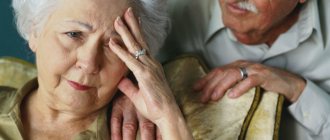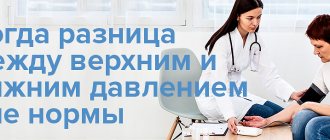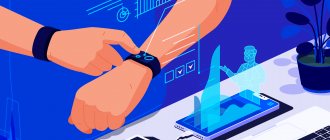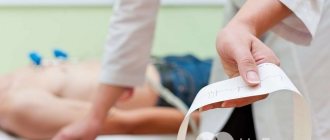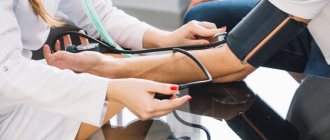Blood pressure directly depends on physical activity, the state of the cardiovascular system, and bad habits. However, not every hypertensive or hypotensive person associates surges in blood pressure (blood pressure) with their daily diet. But food can cause both a decrease and an increase in blood pressure, worsening or improving the patient’s well-being. At the same time, the list of products that increase and decrease blood pressure is individual for everyone, but there are general rules that should be followed in case of problems with well-being.
Why does blood pressure change after eating?
When food enters the digestive tract, the processes of its assimilation and digestion begin, and the production of gastric juice, enzymes and enzymes begins. The blood is enriched with nutrients and is supplied with redoubled force to the gastrointestinal tract to enhance metabolic processes. At this time, the plasma volume increases, the number of red blood cells in the blood decreases significantly.
Whether the pressure will increase and by how much depends on a number of factors. The main reasons for the increase: thick blood (the thinner it is, the lower the risk of a jump in blood pressure), the presence of plaques and blood clots in the vessels that impair blood movement. In this case, a person feels all the symptoms of high blood pressure - headache, increased pulsation, nosebleeds may occur, anxiety and irritability may appear.
If your blood pressure drops after eating, which is typical not only for hypertensive patients, but also for hypotensive patients, then the symptoms are somewhat different. Vision becomes blurred, nausea appears, dizziness, severe general weakness and drowsiness are felt.
In both the first and second cases, measure the pressure that rises or falls and take measures to stabilize the condition. You should pay attention to exactly what foods you consumed before the attack, and try to temporarily exclude them from your daily diet. It would be useful to consult a doctor who can assess the state of the cardiovascular system, prescribe treatment and give nutritional recommendations.
But if a healthy person does not feel the changes occurring in the body, then a chronic hypertensive patient or a patient in a pre-infarction state can often feel the full force of the influence of the usual food on blood pressure. Why a certain product affects your well-being can only be found out after a medical examination.
Important! It is necessary to decide on foods that can increase or slow down the heartbeat, raise or lower blood pressure, and also include foods that stabilize blood pressure in the menu.
Symptoms
Manifestations of postprandial hypotension are similar to those of other forms of the disease. The patient develops the following symptoms:
- starts to hurt and feel dizzy;
- heart rate increases;
- I feel sleepy and feel very weak;
- increased sweating occurs;
- chest pain is felt;
- visual and speech disturbances are possible.
Important information: Is it possible to shower and bathe with high pressure?
If the pressure drops too quickly, the person may faint. Such falls are dangerous in old age, as they often lead to serious injuries.
Worst foods for hypertensive patients
If your blood pressure rises after eating due to hypertension, then you should avoid a number of foods. With low blood pressure, such food, on the contrary, will serve as a kind of energy drink, increase tone and relieve characteristic weakness.
The list of foods and drinks that typically increase blood pressure includes:
Does coffee increase blood pressure?
- Salted fish, smoked meats, preserves. Such foods are oversaturated with salt, which promotes fluid retention in the body and for this reason increases blood pressure.
- Dairy products with high fat content. They have the ability to thicken the blood, which is useful for low blood pressure and unacceptable for high blood pressure.
- Red fried meat, baked goods, sweets. High-calorie foods provoke excess weight gain. And hypertension almost always becomes a companion to obesity.
- Alcoholic drinks. Ethanol sharply constricts blood vessels, which can cause a surge in blood pressure. At the same time, the pulse quickens, which is dangerous for any form of hypertension.
- Tonic drinks. These include coffee, black tea, all kinds of energy drinks, which not only increase blood pressure, but also provoke attacks of tachycardia.
Of course, you shouldn’t completely give up your favorite baked goods, morning cup of tea or glass of dry wine. However, it is worth minimizing the consumption of the above products and monitoring your condition after eating or drinking.
No ads 1
Treatment of postprandial hypotension
Therapy must be comprehensive, including a certain lifestyle, proper nutrition, and medications.
Lifestyle
For any form of hypotension, it is necessary to maintain a healthy lifestyle and give up bad habits, especially smoking and drinking alcohol. Patients benefit from walking, physical therapy, swimming, and light physical activity. If you feel frequently unwell, you can wear special compression stockings that increase blood flow to the heart. They are selected depending on the individual characteristics of the body, adhering to the basic rule - the pressure should be distributed evenly. In the morning you should not get out of bed abruptly - you need to get up gradually, sitting on the edge for a while.
Traditional therapy
Conservative treatment for postprandial hypotension depends on the causes of the disease and the general condition of the person. To relieve symptoms, Levodopa, Octreotide, Midodrine, and other medications are prescribed; to improve the general condition, vitamins and restorative medications are prescribed. Caffeine-containing products, adaptogens, and tonics are effective. To achieve results, conservative therapy is combined with physiotherapy - massage, mud therapy, hydrotherapy. To reduce the manifestations of the disease, it is necessary to determine the underlying pathology and begin to eliminate it.
Attention! It is strictly not recommended to take any medications on your own when blood pressure drops - conservative therapy is selected after consultation with a doctor.
Blood pressure lowering products
If your blood pressure rises after eating, it makes sense to reconsider your diet and fill it with food that normalizes your condition and strengthens blood vessels. These include:
- spinach;
- raw almonds;
- bananas;
- white beans;
- potato;
- turmeric;
- Cayenne pepper;
- sunflower seeds;
- low-fat dairy products;
- ginger;
- green tea;
- chokeberry;
- black chocolate.
Such food has a beneficial effect on blood pressure, normalizes heartbeat, and prevents the formation of plaques on the walls of blood vessels. But it is not able to have a pronounced effect on pressure in the form of a sharp drop.
Citrus fruits, consumed in large quantities, have an excellent ability to lower blood pressure.
Cheese
Aged cheeses also contain amines. Especially dangerous for those who are prone to migraines and react sharply to weather changes are blue cheeses, brie and camembert, which have a moldy crust, and parmesan. They contain the substance tyramine, which causes brain vessels to first contract and then expand sharply. Tyramine also competes with the “happiness hormone” serotonin and displaces it from the body.
Article on the topic
Add pepper. What healthy spices should you replace salt and sugar with?
Additional nutrition tips
If you experience regular changes in blood pressure after eating, you should follow a few simple rules that are also relevant for healthy people.
- Avoid overeating. You can eliminate the absorption of excessive amounts of food by eating small and often. The optimal solution is 5 meals a day in portions not exceeding 300 ml in volume.
- You shouldn't eat before bed. The last meal should be no later than 1-3 hours. Sleeping on a full stomach will be restless, and the body will need more energy to digest food, which can cause an increase in blood pressure.
- Fasting for hypertension or hypotension is excluded without consultation with the attending physician.
- The best way to prepare food is steaming, the worst way for vascular health is frying.
- It is important to maintain a drinking regime, drinking 1.5–2 liters of clean water per day. For chronic hypertensive patients, these numbers should be reduced, since a large amount of fluid can raise blood pressure.
- You should exclude carbonated drinks, fast food, unhealthy sweets, and canned food from your diet.
- The proportion of fiber-rich foods should increase.
- The main components of the plate should be vegetables, herbs, fruits, dairy products, lean meats and fish.
- If you feel that your blood pressure is rising after eating something, or your heart rate is increasing, you should measure your blood pressure and take the medications recommended by your doctor to stabilize your condition.
Advice! Coffee, tea, and alcoholic drinks should be replaced with water, juices, fruit drinks and compotes based on vitamin-rich fruits and berries.
No ads 2
What could be the causes of arterial hypotension? Could stress have any effect on this?
– A sharp decrease in blood pressure can occur in various acute conditions, such as shock, myocardial infarction, blood loss, trauma, burns.
Chronically low blood pressure occurs when:
- adrenal insufficiency;
- hypothyroidism;
- taking certain medications (antidepressants, muscle relaxants, nitroglycerin, Viagra);
- heart defects;
- chronic heart failure;
- severe anemia;
- change in body position from horizontal to vertical (orthostatic hypotension);
- after meals (postprandial hypotension) in elderly people;
- patients with Parkinson's disease;
- after surgery to remove part of the stomach.
Hypotension may also be a variant of the individual norm (if there is no pathology).
People react to stress differently. And yes, one of the reactions to stress and irritation can be a reflex decrease in pulse, blood pressure, even fainting.
Pressure control
Many people are concerned about whether it is possible to measure blood pressure immediately after eating. Since food slightly increases blood pressure after consumption, it is better to wait 30-60 minutes before taking measurements. But this does not apply to situations where a person feels ill immediately after eating. It is only important to take into account that an increase in the usual indicators by 20 mm Hg. Art. is normal when you measure blood pressure immediately after a meal.
The risk that your blood pressure may rise and your heart rate may increase after eating increases with factors that contribute to hypertension, including the following:
- heredity;
- endocrine disorders;
- nervous system disorders;
- renal failure;
- psychical deviations;
- old age (over 65 years);
- diagnosed cardiovascular diseases;
- osteochondrosis.
If this is not the first time your blood pressure has risen, you should visit a doctor and purchase a tonometer that allows you to constantly monitor your condition and immediately stabilize it with special medications. To improve your well-being, it is necessary not only to relieve the symptoms of incipient hypertension or hypotension, but also to get rid of the root cause of this condition. Regular examinations by specialists and timely treatment of chronic diseases will help to avoid complications associated with changes in blood pressure.
Diagnostics
Postprandial hypotension can be identified by symptoms that develop only after eating. To make an accurate diagnosis, you need to see a doctor and undergo diagnostics. Blood pressure levels are monitored for several weeks at different times - in the morning before and after breakfast, in the evening. To prescribe the correct treatment, you need to establish the cause of the pathology and eliminate it.
At the first stage, the doctor collects the patient’s complaints and medical history, then prescribes tests. The usual procedure for diagnosing postprandial hypotension includes an electrocardiogram, examination of the digestive tract, and clinical blood and urine tests. The final diagnosis is made after comparing test results and blood pressure readings obtained in different periods.
For reference! In most cases, postprandial hypotension is manifested by increased heart rate, weakness and other symptoms in cases where the patient has concomitant pathologies. Healthy people usually feel normal; changes in blood pressure can only be determined after measurements are taken.


